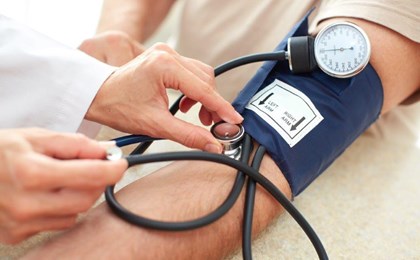How To Spot Skin Cancer
19th, Jul 2013
Skin cancer is one of the most common types of cancer seen in the UK. It is also one of the most treatable, depending on its type and if it is diagnosed early enough.
Skin cancer is one of the most common types of cancer seen in the UK. It is also one of the most treatable, depending on its type and if it is diagnosed early enough.
For many people, changes in a skin lesion, such as a mole bleeding, changing shape / colour or becoming itchy can be an early indicator of cancerous change and should prompt a check-up. Several well-known factors increase the risks of developing skin cancer. These include a family history of skin cancer, or previously being burnt by the sun as a result of insufficient protection.
Protecting children from harmful UV rays is especially important and it is recommended that a high SPF of 30 or above be used to prevent them from burns when out in the sun. Simple measures such as a large hat are effective in providing a degree of protection and sunglasses will protect the eyes from damaging rays. It is advised that sunglasses carry the UV 400 or 100% UV protection rating to ensure sufficient protection.
One blistering sunburn episode in childhood or adolescence can more than double a person's chances of developing melanoma (an aggressive form of skin cancer) later in life. A person's risk for melanoma also doubles if they have had five or more sunburns at any age.
Non-melanoma skin cancer is a less aggressive form of skin cancer but treatment should be sought as soon as any changes are noticed to help with effective treatment. Non-melanoma is one of the most common types of cancers in the world and it is estimated around 100,000 new cases are reported in the UK alone every year. Since these tend to occur in sun exposed sites, the face, scalp and neck are common sites of occurrence and if neglected these can result in some degree of disfigurement after treatment.
There are two main types of non-melanoma and both have very high success rates following effective treatment. Basal cell carcinoma treatment is completely successful in approximately 90% of cases and between 70% and 90% of people with squamous cell carcinoma will be completely cured.
A good way of helping tell the difference between a normal mole on the skin and a melanoma is to use the ABCDE checklist but if in any doubt it is always recommended that you seek advice from a specialist.
A: for asymmetrical – melanomas have two very different halves and are an irregular shape.
B: for border – unlike a normal mole, melanomas have a notched or ragged border.
C: for colours – melanomas will be a mix of two or more colours.
D: for diameter – unlike most moles, melanomas are larger than 6mm (1/4 inch) in diameter.
E: for enlargement or evolution – a mole that changes characteristics and size over time is more likely to be a melanoma.

Mr Mike Perry, Consultant Oral and facial Surgeon, works with 3fivetwo Healthcare specialising in the removal of facial skin lesions as well as the assessment of facial deformity and other lumps and bumps in the head and neck area. He said, “In the vast majority of cases all the lesions we are asked to see are benign. Although in most cases we can be reasonably confident with our diagnosis, the only way to be absolutely sure is to remove either a piece of the lesion, or the entire lesion and send it off for testing. If it’s small enough we can usually remove the whole thing, which has the additional benefit of removing it cosmetically.”
Biopsies of moles or other skin conditions where cancer may be present are sent to a specialist laboratory where they are tested and sampled to detect if cancer is present. The results of a biopsy can help determine effective treatment if cancerous cells are found. Although surgical removal is regarded as the most effective treatment for many skin cancers, treatments can be modified depending on size, site as well as the patient’s health and preferences.
Skin cancer is not always preventable, but you can significantly help to reduce your chances of developing the condition by avoiding overexposure to UV light in direct sunlight. It is also recommended that you refrain from using tanning booths or sunbeds as the UV light emitted from these machines can be very strong and cause damage in a short period of time.
The best way of protecting against the sun is to use an effective sunscreen. SPFs of 20 or above are recommended for adults but this can vary depending on skin type so higher SPFs are guaranteed to provide effective protection. For children it is recommended that SPF of 30 or above be used as their skin can be more easily damaged and burned by UV rays.
Regularly checking your skin for signs of skin cancer can help lead to an early diagnosis and increase your chances of successful treatment. The back is a difficult site for obvious reasons, but never be afraid to ask a friend (or a professional)!
If you would like to book an appointment or require further information on the options available to you, please do not hesitate to contact our private patient booking team on the details above.








